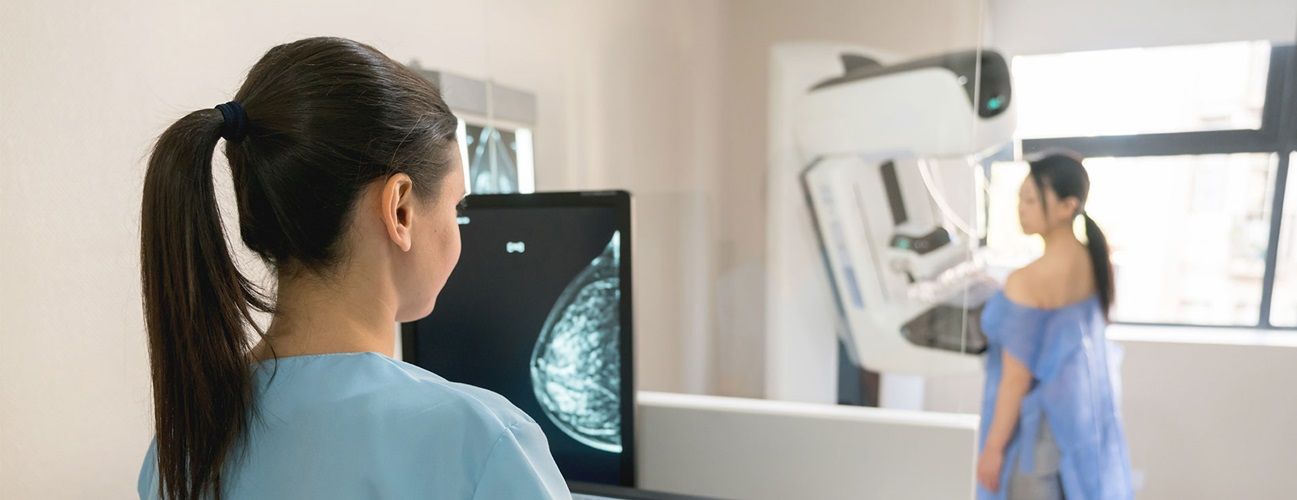
Breast cancer is the most commonly diagnosed cancer among American women. In 2021, it's estimated that about 30% of newly diagnosed cancers in women are breast cancers. About 1 in 8 U.S. women (13%) will develop invasive breast cancer over the course of her lifetime. Translated into total numbers, this means an estimated 281,550 new cases of invasive breast cancer are expected to be diagnosed in women in the U.S., along with 49,290 new cases of non-invasive (in situ) breast cancer by the end of the year. Breast cancer is also the second deadliest form of cancer for U.S. women (lung cancer remains the deadliest). About 43,600 women in the U.S. are expected to die in 2021 from breast cancer alone
But there is good news. While death rates from breast cancer have been steady in women under 50 since 2007, they have continued to drop in women over 50, decreasing by 1% per year from 2013 to 2018. These decreases can be attributed in large part to earlier detection through screening.
Breast cancer screening means checking a woman's breasts for cancer before there are any signs or symptoms of the disease. The US Preventative Services Task Force recommends that women between the ages of 50 to 74 are at average risk for breast cancer and should get a mammogram every two years. Women who are 40 to 49 years old should talk to their doctor or other health care professional about when to start and how often to get a mammogram; this is typically when individual risk factors are discussed. Many factors over the course of a lifetime can influence breast cancer risk. Some can't be changed or avoided, such as getting older or family history, but healthy lifestyle choices can help lower the risk. Women should weigh the benefits and risks of screening tests when deciding whether to begin getting mammograms before age 50.
Although breast cancer screening cannot prevent breast cancer, it can help find breast cancer early, when it is easier to treat. Talk to your doctor about which breast cancer screening tests are right for you, and when you should have them.
Breast Cancer Screening Tests
Mammogram
A mammogram is simply an X-ray of the breast. For many women, mammograms are the best way to find breast cancer early, when it is easier to treat and before it is big enough to feel or cause symptoms. Having regular mammograms can lower the risk of dying from breast cancer. At this time, a mammogram is the best way to find breast cancer for most women of screening age. Studies have shown that ultrasound can also help find breast cancers that can't be seen on a 2D mammogram. However, the cost of an ultrasound may not be covered by insurance.
Summit Medical Group offers 3D mammography technology, which takes multiple images of breast tissue to create a multi-layered image, compared to a single image created by traditional 2D mammography. It emits the same amount of radiation as a traditional mammogram, takes only a few seconds more to perform and causes no additional discomfort. The clearer 3D picture allows doctors to examine breast tissue one layer at a time to help make a more accurate diagnosis, thus helping to reduce false positives and the need for further testing. 3D mammography is particularly beneficial for women with dense breasts because the multiple, higher-quality images make it much easier for doctors to spot abnormalities than traditional mammography.
Breast Magnetic Resonance Imaging (MRI)
A breast MRI uses magnets and radio waves to take pictures of the breast. Breast MRI is used along with mammograms to screen women who are at high risk for getting breast cancer. Because breast MRIs may appear abnormal even when there is no cancer, they are typically not used for women at average risk.
Other Exams
Clinical Breast Exam
A clinical breast exam is an examination by a doctor or nurse, who uses his or her hands to feel for lumps or other changes.
Breast Self-Awareness
Being familiar with how your breasts look and feel can help you notice symptoms such as lumps, pain, or changes in size that may be of concern. These could include changes found during a breast self-exam. You should report any changes that you notice to your doctor or health care provider. Having a clinical breast exam or doing a breast self-exam has not been found to lower the risk of dying from breast cancer.
Where can I get a mammogram?
Typically, you can get screened for breast cancer at clinics, hospitals, or doctor's offices. If you want to be screened for breast cancer, call your doctor's office. They can help you schedule an appointment. Most health insurance plans are required to cover screening mammograms every one to two years for women beginning at age 40 with no out-of-pocket cost (like a co-pay, deductible, or co-insurance).
Summit Medical Group offers 3D mammography at three convenient locations in Knoxville. No physician referral is required. For additional information, visit www.summitmedical.com or call Summit Diagnostic Imaging at 865-588-8005 to schedule your 3D mammogram today!
